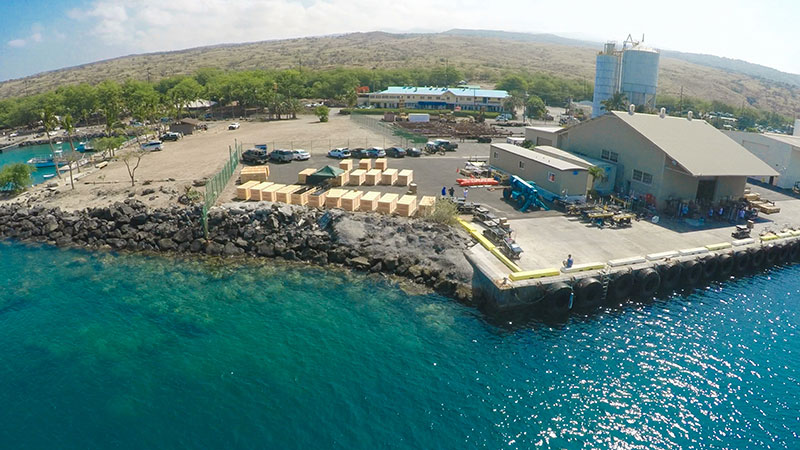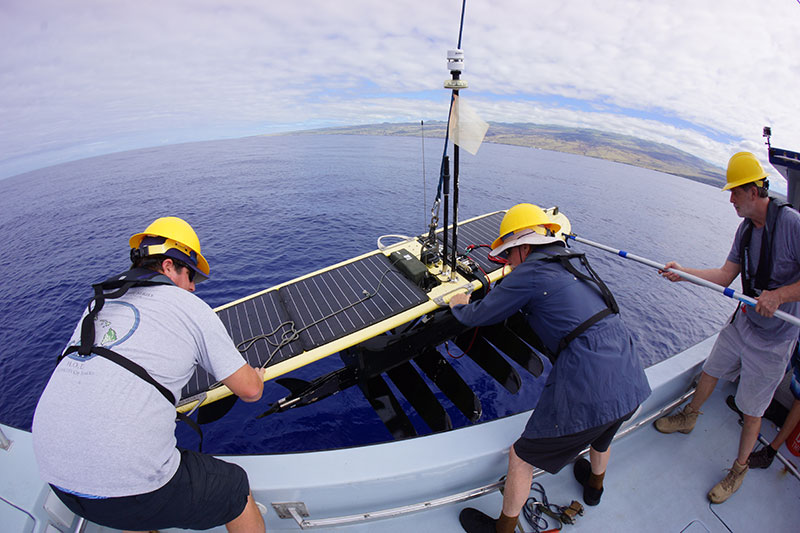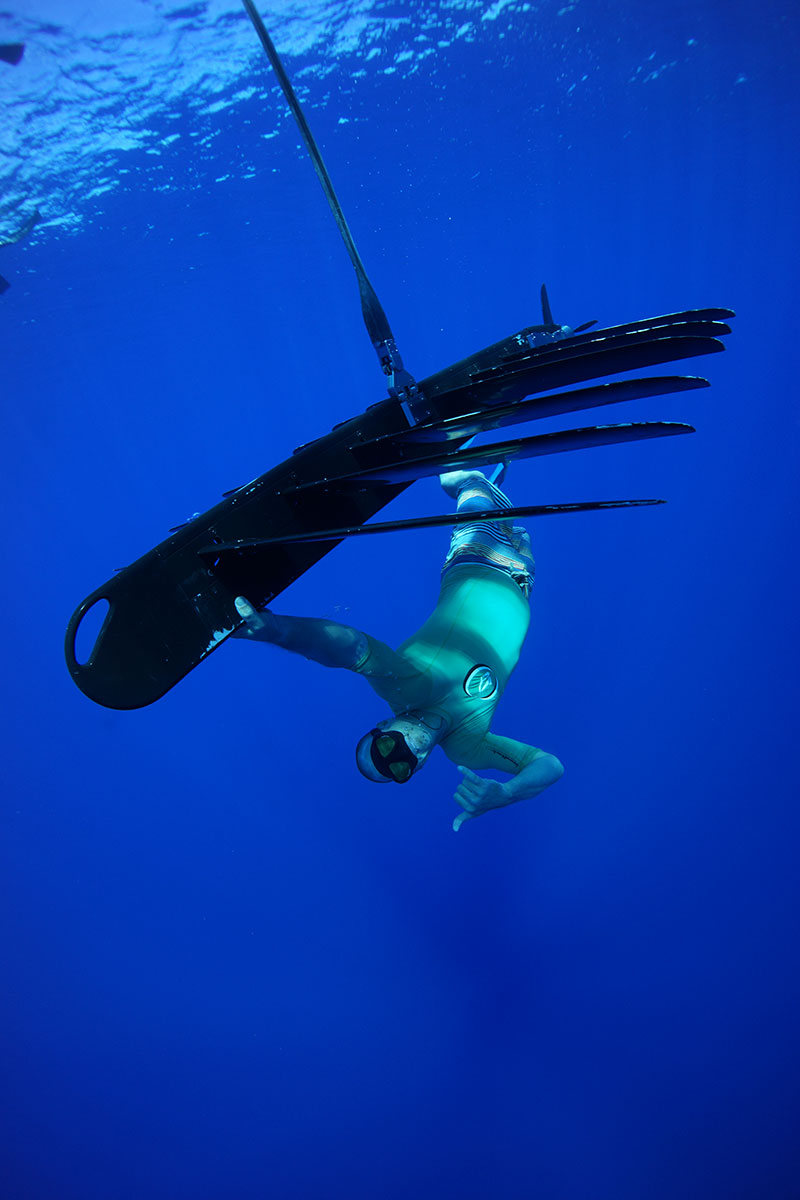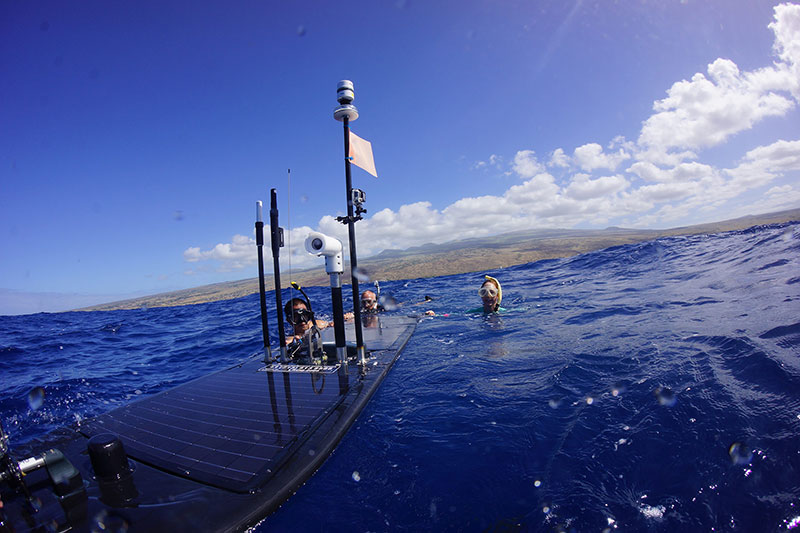Three Days at Wave Glider Training
Bryce Bergen — June 1, 2017
When I first came to Liquid Robotics, I worked the night shift piloting Wave Gliders, and I had people calling in with all kinds of questions. That’s one of the reasons I volunteered to lead the training program. I’m very passionate about helping our customers get trained on their Wave Gliders; it’s one of the best ways to set your mission up for success.
Here’s what it’s like to come to three days of training at our facility in Kawaihae, Hawai’i.

DAY 1
08:00 We meet in the parking lot for a meet and greet, and then we go into the training trailer so people can put their stuff down. Then we give everyone a brief tour of the facility and talk about safety protocol and picture-taking protocol. We show everyone the main room with earlier versions of Wave Gliders on the wall. This is also where we do a lot of the cleaner work like debugging and training. Then we move into the back area of the shop where picture-taking is not allowed. And then we go out onto the apron, which is right on the water.
After giving everyone the lay of the land, we go into the classroom and start. We go through the first chapter in the training, including all of the Wave Glider Management System (WGMS) elements that you would need to complete a pre-launch. A pre-launch is completed on each Wave Glider before we put it in the water so we’re confident that everything is in order.
Next, we go outside to unpack and assemble the training vehicle. After lunch, we go through the pre-launch process for the Wave Glider being used in our training exercise. We log onto the vehicle webpage and checklist, and go through all items so you can see if the Iridium is working, if your solar panels are working, view your total battery power, and go through all mechanical checks, making sure everything is good to go.
At the end of Day 1, we’ll watch some launch and recovery videos in preparation for Day 2. We also get everyone fitted for a mask and fins, which they can borrow it if they want to go back to their hotel and go snorkeling. They’re pretty stoked about that. END 16:30

DAY 2
08:00 Day 2 is launch and recovery training. I normally get there early, pull the boat around and get it ready. We have the Wave Glider assembled the day before on the dock (allowing the Wave Glider to sit all night to see if any alarms pop up).
We depart the dock around 8:30. First the Liquid Robotics team will launch and recover it once, to show them how to do it, and then we have the students do it. We’ve found that around the fifth time they’re comfortable on their own. If it’s a bigger group, I’ll have one of them be the leader on the launch and the recovery, then we’ll have them rotate the leader. We encourage the leader to say commands out loud like they actually would on the ship when they are doing it.
The time it takes to launch the Wave Glider depends on the crew and the weather, it can take 2 minutes, it can take 1 minute, or it can take 10 minutes. Recovery takes around 4 minutes on a good day and up to 40 minutes in more challenging situations.
By that time everyone is pretty hot and tired and ready to get in the water. We normally have six students on the boat and four people from Liquid Robotics. On the Liquid Robotics side, we have two people stay on the boat—the captain and the lookout—and then two people in the water—the host with the camera, and the safety swimmer. If it’s a big group we’ll do two swims, if it’s a smaller group then everyone can go in at once.
We have the safety swimmer go in first. The safety swimmer will keep an eye out for marine life, and slow down the Wave Glider for the students. They’ll also be looking for people that are getting tired, and ensuring everyone is safe around the vehicle. After the safety swimmer makes sure everything is clear, the students go in with the host to swim, take pictures, and have fun.
The swim is an eye-opening experience for most people, it’s pretty cool. If there is some chop, it’s hard to catch up to the Wave Glider, you’ve got to actually swim! You’re like, “it works!” You can hold on to the back of it and let it tow you around. If it’s calm, we’ll use the thruster; the Wave Glider will take off and everybody will try to chase it.
After the swim, we come in and have lunch. I warn everybody when they first get in and put their bags down, whoever sits in the front right is in the hot seat, they’re the pilot.
Then we go step-by-step through the rest of WGMS. We have them build courses for the Wave Glider to navigate, go through the majority of the commands that are highly used, and basically operate the Wave Glider as they would normally. This work spills over into Day 3. END 16:30

DAY 3
08:00 The first thing we do is review WGMS, and we touch on anything they want to know. When we go over setting up courses, I ask them where they are going to be operating. We try our best to practice exactly where they are going, or somewhere similar if that’s not allowed, and set up the exact course they are going to be operating with.
We also review the pre-launch document again. The second time around it goes a lot faster and there’s a lot more grasping of the knowledge. I’ll invite someone else from Liquid Robotics to join us and we’ll do questions and answers until everyone is feeling comfortable about operating their Wave Glider. If there’s anything that we can’t answer, I do my best to get the answers and get back to them.
After that, that’s it. I tell the students you can stay as long as you want, often we’ll hang out for a while with the Wave Gliders we have out in the shop. END 16:30
I feel it’s very important that people get properly trained on the Wave Glider. These are complex vehicles, and we want to make sure we set your mission up for success.

Bryce Bergan is a Field Support Engineer with Liquid Robotics, and leads the Wave Glider training program.
